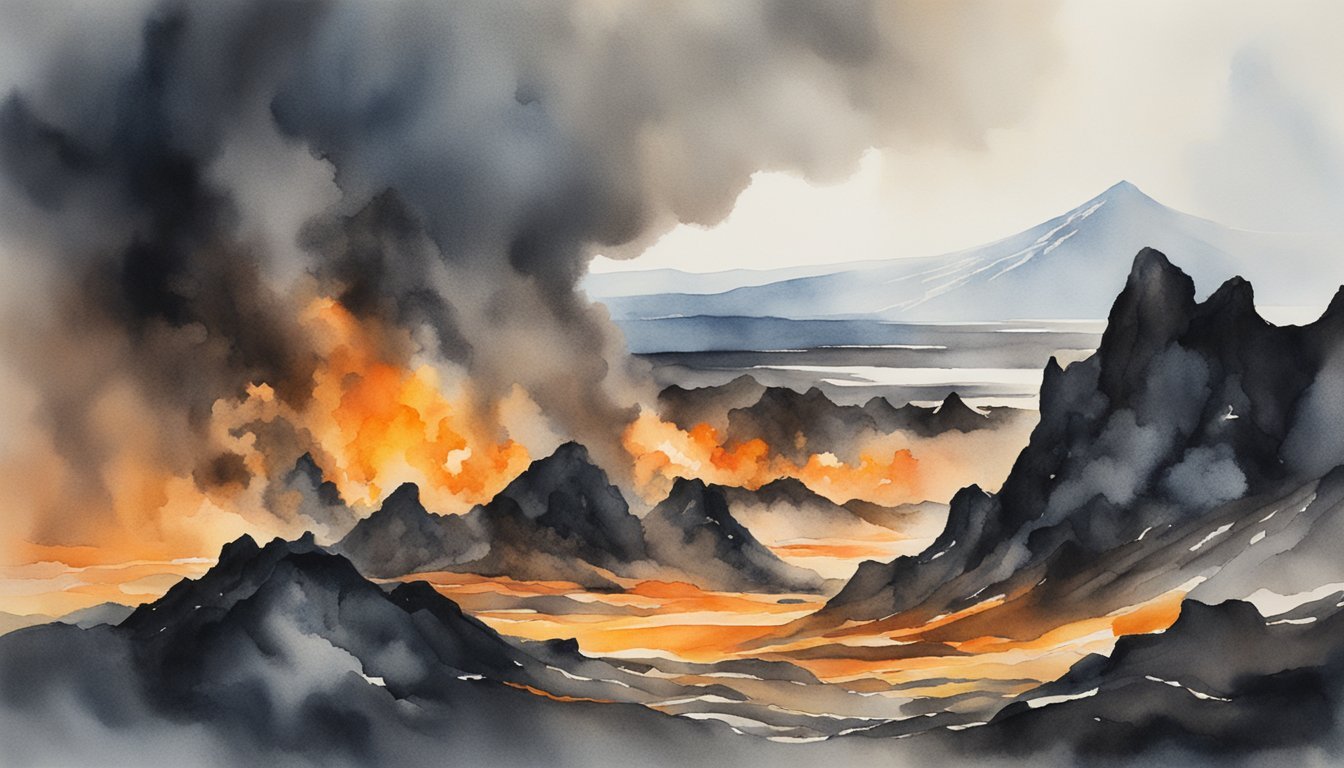Understanding Iceland’s Volcanic Landscape

Iceland’s dynamic volcanic landscape offers an unparalleled window into the Earth’s fiery inner workings. The island sits atop a unique intersection of geological features, making it one of the most volcanically active places on Earth.
Geographical Setting and Volcanic Zones
Iceland is situated on the Mid-Atlantic Ridge, where the North American and Eurasian tectonic plates diverge. This setting accounts for its high volcanic activity, with the country boasting numerous volcanic zones. Among these, the Reykjanes Peninsula is notable for its recent eruptions and seismic activity. Iceland is also recognized as a hot spot, where a mantle plume delivers molten rock to the surface, further contributing to the volcanic activity.
The Science of Iceland’s Volcanism
The science of Iceland’s volcanism is rooted in its location over a hot spot along the Mid-Atlantic Ridge. The movement of tectonic plates results in not just volcanoes but also fissures and rift zones. This geologic combination allows magma from deep within the Earth to reach the surface, explaining the frequent occurrence of eruptions. Grindavik, a town on the Reykjanes Peninsula, has witnessed this firsthand, with volcanic activity shaping the surrounding landscape.
Historical Volcanic Eruptions
Throughout its history, Iceland has experienced numerous volcanic eruptions, each contributing to the island’s evolution. Dormant volcanoes coexist with active ones, the latter periodically bursting forth to release a significant amount of volcanic ash and lava. Significant eruptions, like the one at the Fagradalsfjall Volcano, have further illustrated the island’s ongoing tectonic activity, leaving indelible marks on both the land and its inhabitants.
Impact of Volcanic Activity on Iceland

Volcanic activity in Iceland not only shapes the island’s unique landscapes but also exerts a substantial influence on its environment, society, and economy. Here, we explore the distinct impacts of eruptions, from local effects to the challenges and opportunities they provide.
Effects on Local Environment and Population
Eruptions can prompt immediate changes in Iceland’s local environment, with lava flows and ash clouds often resulting in habitat alteration. For instance, the Fagradalsfjall eruption created new landforms altering local ecosystems. Residents living near active volcanic systems like Katla face the possibilities of glacial ice melts leading to flooding, while volcanic gases can cause air quality to decline, leading to respiratory problems. The Icelandic Meteorological Office plays a pivotal role in monitoring such changes and advising the public on safety practices.
Tourism in Volcanically Active Regions
Tourism in Iceland thrives partly thanks to its dynamic landscapes moulded by volcanic forces. Destinations such as the Blue Lagoon and the newly formed Geldingadalur valley have become magnets for tourists. However, tourism can be disrupted by events like the 2010 Eyjafjallajokull eruption, which heavily impeded air travel across Europe due to the vast ash cloud it produced.
Preparation and Response to Volcanic Events
Iceland’s preparedness for volcanic events is exemplified by the coordinated efforts between volcanologists, police, and other authorities. Measures include evacuation plans for areas around volcanoes like the active Katla, and infrastructure adjustments at important facilities such as Keflavik International Airport to mitigate the impact of ash clouds. Public advisories and actions are grounded on data provided by the Icelandic Meteorological Office and the scientific community, which continually study phenomena like earthquakes and fissures that precede an eruption.

